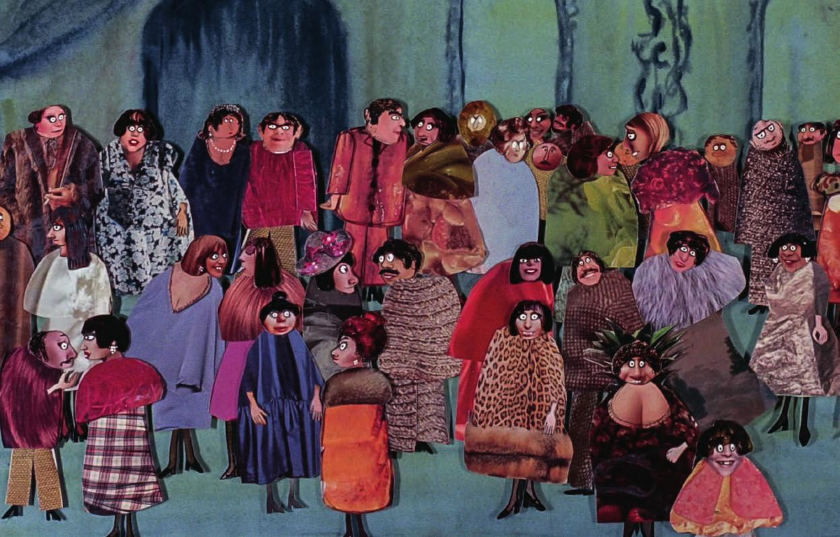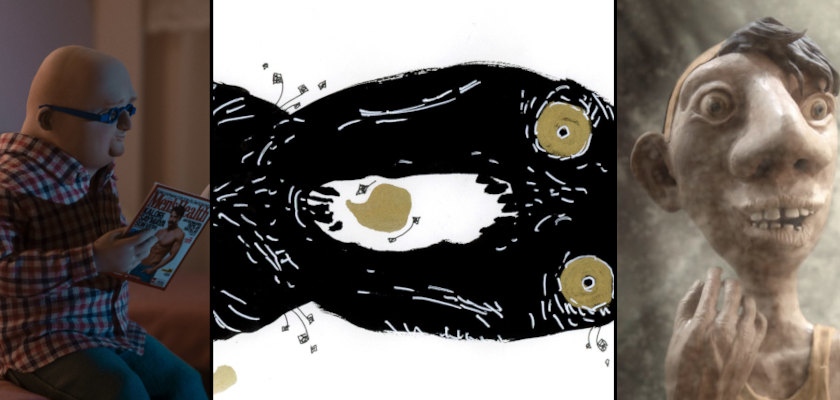Propaganda, Ideology And Animation Conference: Call for Papers

Foundation for Promotion of Artistic, Film and Audiovisual Culture “Etiuda and Anima” festival organizes, with the support of International Visegrad Fund, a two-day conference in Krakow, Poland (23-24 November 2017), V4 Perspective on Propaganda, Ideology and Animation International Academic Conference on Animated Film
The organizers invite scholars of arts, humanities and social science to reflect upon the dangerous liaisons between animation art and official propaganda. The first edition of the conference Twisted Dreams of History. Subversiveness and Deformation in Animated Film from V4 Countries (Bielsko-Biała, 2015) was focused on the dissident and counter-cultural features of animation cinema that have undermined social and political taboos.
This year the researchers will be encouraged to abandon the previous approach based on analyses of individualistic, authorial artworks, in favor of critical investigations of political factors determining production process as well as form and content of animation. Research on the ideological entanglement of animation carries the potential to enrich the knowledge about history of animated film, but also to regard animated propaganda as a 'laboratory' that allows examining mechanisms of agitation and indoctrination that reproduce themselves within current media.
The conference will be held almost exactly hundred years after the outbreak of the Bolshevik Revolution, an event that has reshaped the geopolitical map of Europe and Asia and to large extent determined the course of the 20th century. Noam Chomsky in his thorough study of mechanisms of mass-disinformation (Necessary Illusions: Thought Control in Democratic Societies, 1999) points out that the year of 1917 was crucial for one other reason: John Dewey's circle used the modern means of mass-communication to convince the initially reluctant American nation to support the military entry into World War I. Chomsky frequently underlines the similarities between certain convictions of Soviet propagandists and conceptions of American social engineers such as Walter Lippmann, Edward Bernays or Reinhold Niebuhr. Each of these three thinkers claimed that the ignorant masses must be guided by the elite group of individuals whose intellectual horizons are wide enough to embrace all the complexity of political processes and see what remains unseen by the majority of the population. Such notion appears as parallel to the concept of radical intelligentsia who, according to Marxist-Leninist doctrine, was the vanguard of social progress leading the proletariat masses unable to comprehend the higher understanding of mechanisms that determine society, politics and history.
As Lenin claimed, If Socialism can only be realized when the intellectual development of all the people permits it, then we shall not see Socialism for at least five hundred years. Drawing a perfect symmetry between the Soviet communism and the American free-market democracy would inevitably lead to falsifying simplifications, however there is no question that certain analogies do appear, especially when both systems are viewed in retrospect. As Benjamin Ginsberg puts it: While westerners usually equate the marketplace with freedom of opinion, the hidden hand of the market can be almost as potent an instrument of control as the iron fist of the state.
From its very beginnings animation was used as a convenient channel of ideological transmission. Complex artistic works, educational children films, simple commercials - all of them have been easily incorporated into propaganda apparatuses upholding various political systems. In the first decades of film history pioneers such as Winsor McCay, Quirino Cristiani, Zenon Komissarenko or Wan Brothers demonstrated the engaging and persuasive potential of animated attraction. This potential was recognized by the authorities seeking easily understandable and highly entertaining form of communication with the masses. During the World War II both the Allies and the Axis countries mobilized popular cartoon characters to serve on the front-lines of the propaganda war. From the perspective of the film historian concerned about interweaving of art and ideology, the Cold War era is arguably the most interesting period. Comparative analysis of the animated propaganda from both sides of the Iron Curtain may expose modes of manipulation in their purest form.
As a cultural phenomenon, the propaganda is alive only when it meets with the sinister other – as a matter of fact, a portrait of the enemy is probably the most important motive of all propaganda films. This can be observed by the example of inseparable and interdependent “Siamese twins” of communist and capitalist ideologies that mirrored and conditioned one another using similar methods of persuasion. It seems that contemporary viewers may benefit greatly from discovering and deconstructing these methods, especially since the Cold War logic based on absolute ideological polarization returns in the propaganda war between European nationalisms and Islamic fundamentalisms, or most recently in escalation of nuclear threats between USA and North Korea.
The organizers especially welcome papers dedicated to the animation from Central-East Europe (Visegrad Group countries in particular), however they do not restrain the researchers from investigations over other cultural contexts. The official language of the conference is English. It is possible to deliver the lecture in other languages of V4 countries, yet this option shall be consulted with the organizers in advance. The conference will be followed by publishing of the peer-reviewed monograph in English.
Areas of interest may include by are not limited to:
- Political inclinations of early animated film.Animated film in the wartime
- Animated film in totalitarian and authoritarian systems.
- Censorship: history of regulations, bans and “safety valves”.
- Representation strategies and narrative models of communist and capitalist animated production.
- “End of History” in animation: political, economic and aesthetic problems of the 1990s.
- Animation and democracy: social and political campaigns, on-line trolling, and grass-root propaganda.
- Politics of production, distribution and reception: ideological determinants of contemporary circulation of animated film.
- History and ideology of animated advertisement.
- Iconography of animated indoctrination.
- Play of discourses: propaganda that domesticates dissident art and subversive expression that exploits symbols of dominant ideologies.
- Intertextual relations: animation against the background of caricature, poster and political satire.
- Strategies of artistic resistance in animated film.
- Animated politics of remembrance.
- Ideological criticism in animation studies.
- Film festival studies: programing policies of animated film festivals.
IMPORTANT DETAILS
The submission sent to the address:
• Your name and contact details (email, phone number)
• Your degree and academic affiliation
• Your short bio
• Abstract in English of max. 1500 characters
Deadline for submission: 20 October 31 October 2017
ORGANIZERS:
Organizer: Foundation for Promotion of Artistic, Film and Audiovisual Culture “Etiuda and Anima”
Project realized with the support of: International Visegrad Fund
Academic Partner: Faculty of Humanities, AGH University of Science and Technology in Krakow
Special Guest: Theodore Ushev
Conference Academic Committee:
Professor Stefan Bielański (Pedagogical University of Cracow), Professor Barbara Gąciarz (AGH University of Science and Technology in Krakow), Professor Alicja Helman (Jagiellonian University, University of Humanities and Economics in Lodz), Professor Jadwiga Hučková (Jagiellonian University), Professor
Andrzej Pitrus (Jagiellonian University), Professor Anna Siwik (AGH University of Science and Technology in Krakow)
Conference Organizational Committee:
Olga Bobrowska, Michał Bobrowski PhD, Bogusław Zmudziński PhD
Project Partners:
• Bielska Gallery BWA in Bielsko-Biała ()
• PAF Festival of Film Animation, Olomouc, Czech Republic
• Primanima World Festival of First Animations, Budaors, Hungary
• Fest Anča, Žilina, Slovakia








